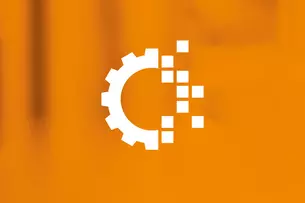Experience digitization and artificial intelligence live
Greater productivity through digital technology
automatica is an opportunity to experience just how great the potential for increasing productivity in manufacturing really is. Digitization and artificial intelligence are the key technologies that also make major contributions to sustainability and climate neutrality efforts.

The new world of automation
What do concepts such as virtual commissioning, digital twin, and artificial intelligence really mean? And what technical, structural, organizational, and intellectual challenges do they raise? The goal certainly is rewarding: customized production with greater quality and efficiency.
A development that has been observed at the previous automatica exhibition will become even more visible this year: Every component, from plugs and sensors all the way to robots, is now available in a version compatible with Industry 4.0. Anyone looking to harness the possibilities of continuously digitized production facilities will find suitable equipment at automatica.
Basic prerequisite: powerful ICT infrastructure
Impressive: recording, evaluating and smart pooling of all digital production data can unlock enormous output increases via corresponding optimization efforts. This requires suitable ICT infrastructure. In this context, edge and cloud computing are sensible solution approaches due to the very large amounts of data.
Artificial intelligence
Users employing artificial intelligence in their product optimization efforts will unlock significant efficiency gains. Because even the initial steps towards AI have already had enormous effects on production processes. For example, smart software can now detect patterns by processing and analyzing Big Data. This enables real-time predictions and reactions.

And this is what the new world of automation looks like: machine components automatically detect and report wear and irregularities. Robots and plants optimize their operation independently. And, upon full implementation, products find their own optimized way through the production process. This also enables significantly more cost-effective automated small series production down to a batch size of 1.
Learn more about digitalisation and AI
For those who want to read up on this in advance: our newsroom provides you with a wealth of information and materials on this trend topic.
Virtual commissioning
You should definitely convince yourself of the numerous advantages brought about by another megatrend: virtual commissioning. Exhibition stands are probably the best place to demonstrate the potential of this visionary technology. Here, you can see for yourself how easy it is to implement optimizations or adjustments in the digital twin first. Further advantages include the parallel development of plant components across sites located around the world, significantly reduced commissioning times, error prevention, and employee training using the digital twin.
Focus on climate neutrality
Adding on to all the excitement about enormous potential in terms of greater productivity, users of these digital technologies can also benefit from another effect that is at least as significant. Digital integration makes a significant contribution to climate neutrality. Various studies have come to different conclusions on this matter. Some have calculated a potential CO2 reduction of up to 64 megatons by 2030, provided that production facilities are consistently digitized. This is a goal worth pursuing and a great perspective for all automation specialists.


